Since beginning his critically acclaimed collection of one-take/no dialogue/stationary camera short films The MUTE Series in 2016, its writer/director Andy Lambert has perfected the art of working within creative limitations in the otherwise expansive medium of cinema. Now after a year and a half-long hiatus, Lambert’s award-winning anthology returns with 3 more quick yet unforgettable vignettes that imaginatively chronicle the most unexpected moments of everyday life.
Now streaming on the show’s official web site (link below), these latest films include a modern-day take on director John Boorman’s classic 1972 survival thriller Deliverance, plus the spaghetti western-inspired “Dust Devil” (filmed in Almeria, Spain, where Sergio Leone shot the 1967 Clint Eastwood epic The Good, The Bad and The Ugly) and the comedic “Scene Stealer”, which pays homage to both today’s self-obsessed digital culture and the legendary Master of Suspense, Alfred Hitchcock.
Like the preceding 15 shorts in the MUTE series, Lambert’s newest works are diverse and entertaining – and they all come with their own unexpected twists. Though the filmmaking processes of auteurs like Hitchcock, Leone, Boorman, Roy Andersson and Jacques Tati were among several influences on Lambert when he conceived this current batch of MUTE films, Lambert tells Snobby Robot that he found his real inspiration for creating “Dust Devil”, “Scene Stealer” and “Deliverance” in sources both profound and personal.
SR: What inspired you to make these latest 3 films in the series, and how did you come up with the ideas for them?
Andy Lambert (writer/director, The MUTE Series): I was keen to make some new episodes for The MUTE Series as it had been a year and a half since the previous batch had come out. Last year I was actually on holiday in southern Spain, not far from Almeria. I had once shot a TV commercial there in one of the spaghetti western towns, so I knew how spectacular the semi-desert landscape is in that region. It felt like free production value just to use it as a backdrop so I resolved to make a MUTE film while on vacation.
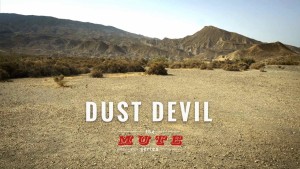
Poster for “Dust Devil”, one of the three newest films in the MUTE Series.
I convinced my wife to make her acting debut and roped in the friends we were with to help out. I had considered doing something that had a connection with the western genre, but in the end I came up with an idea that was a lot more abstract and surreal.
Having said that, Sergio Leone once famously said that the western was “something to do with death” and in a broad sense so is the film I came up with.
Once I had that film in the bag I was determined to shoot at least two more on my return to the U.K. as I always feel a release needs at least 3 or 4 episodes to make an impact. “Dust Devil” ended up quite surreal, so I was keen to make the other two more grounded in reality. Not sure if I succeeded there!
One of them (“Deliverance”) takes inspiration from the simultaneous love of the wilderness, on the one hand, and the desire for convenience, on the other, particularly amongst the millennial generation. It’s always good to focus on a neat example of cognitive dissonance!
The movie allusion is once again rather tangential, but I think this episode is really enhanced if the viewer conjures up notions of the untamed Appalachian forest, with all its jeopardy and hazards, that the title Deliverance is capable of triggering. It’s also a title that works in a couple of other nice ways too, so it was just too tempting not to use.
I wanted the third film (“Scene Stealer”) to feel different again, so I was drawn to a more domestic setting. Like everyone, I’ve been observing the ubiquity of smartphone cameras and seeing how everyone is a director nowadays. These cameras have encouraged an ever-increasing performative aspect to life that sometimes gets in the way of that life itself.
I just pushed that idea to a comic extreme by giving the least likely character unexpected auteur ambitions, referencing a couple of the most famous films in cinema history in the process. This film is probably the broadest comedy I have done in The MUTE Series so far. Mark (Murrell), my producer, was really keen on the script and thought it would add an interesting variation in tone to the series.

The MUTE Series film “Scene Stealer” lampoons how digital technology has made auteurs out of amateurs, while offering some memorable nods to Alfred Hitchcock’s classic suspense thrillers.
SR: In what ways has your love of classic film and such auteurs as Sergio Leone, Alfred Hitchcock and John Boorman inspired you to create the new MUTE films?
AL: Well, Hitchcock made (one of?) the first ‘single take’ films with Rope – which I guess is a precursor to MUTE!
He also featured long sequences with no dialogue (eg. Scottie following Madeleine in Vertigo) and he filmed in a very deliberate, designed and purposeful manner, which I feel is close to the spirit of The MUTE Series. He famously blueprinted his movies beforehand and was bored on the set. I’m a bit of a planner too, although I like to keep alert to last-minute inspiration on the shoot, as well.
Boorman is a pretty versatile filmmaker so it’s tricky to pinpoint an exact influence, but he did, of course, make a whole movie that featured almost no dialogue at all – Hell in the Pacific – which always gets me excited! Leone, too, has created set pieces of pure visual cinema. (Isn’t) the title sequence of Once Upon a Time in the West the best opening ever? Shame about the rest of the film. But really, these are not the filmmakers who have most influenced me regarding the whole MUTE series. Those would be filmmakers such as Roy Andersson, Jacques Tati, Aki Kaurismaki, Pierre Etaix, etc.
SR: All 3 of these films (“Deliverance”, “Scene Stealer” and “Dust Devil”) pay homage to Hollywood history while placing them in a very modern context. In preparing the ideas for these films, how were you able to balance the obvious nods to classic movies while creating original stories to fit around them?
AL: The cinema nods were quite subtle, really, except in “Scene Stealer” when they had to be big in order to make it funny. In that case, the incongruity of a contemporary domestic scene with a classic horror film makes it humorous.
SR: How do these films fit in with the overall mission of the MUTE series, and what are the major themes they explore?
AL: I strongly believe that The MUTE Series is more than the sum of its parts. Each episode you watch makes the ones you’ve already seen resonate stronger. It helps to create a whole off-kilter world where nobody talks and slightly strange things happen. To that end, the more the merrier, so these new additions just grow the series and make it ever more rich and interesting.
That being said, it is a challenge to keep the episodes varied and not to repeat myself in some way. For instance, I have tackled the theme of futility before, but in “Dust Devil” I felt I had a new way to express it that was even more pure. Its stylized abstractness just seemed to make it even more engaging than my previous futile-themed film!

MUTE Series writer/director Andy Lambert’s modern take on the 1972 Burt Reynolds classic “Deliverance” examines man’s instincts for survival in a demonstrably digital world.
“Deliverance” is, on the one hand, a look at that great topic of our time, ‘masculinity in crisis’, and, on the other, a questioning of how ‘natural’ the wilderness or great outdoors actually is.
I suppose it’s the kind of thing that could have popped up in Portlandia with all its parodies of hipster-dom, but hopefully I pulled it off in a more pithy, understated and thus more thoughtful way than the sketched in Portlandia?
“Scene Stealer” continues the fascination with cameras that appeared in an earlier MUTE episode, “Auto Exposure”. The post-modern blurring between reality and fiction never went away. It’s getting more acute than ever and I dare say I’ll be looking at the theme of hyperreality in some way again soon.
SR: In what ways have making these new films in the MUTE series helped you to grow your skills as a filmmaker?
AL: It might not look like it uses any post-production, but “Dust Devil” actually had quite a bit of wire removal involved. Usually, I ask for a favor from a post-production house for something like that but I‘ve now discovered the free Da Vinci Resolve package which is an entire post-production suite, and so, for fun, I decided to try and do the post myself.
It was kind of difficult and I rather wish I had got someone else to do it, but in the end I succeeded which wasn’t without a certain sense of satisfaction, so I guess I’ve added new post-production skills to my role as a filmmaker. We also shot all of these new films on the little Fuji XT3 camera at 4K resolution. It’s a brilliant camera, amazing value too. Really recommend it.
SR: Will there be any more MUTE films coming after these latest 3 are released?
AL: I really hope so. I’m always on the look out for getting some financial support and, maybe with Quibi (the new short form mobile content app) about to release, short-form is the new long-form, so you never know!
SR: What do you hope people take away from seeing these films?
AL: I hope they think that life is futile and absurd we’re all living in one big irony loop – but otherwise, everything’s great.
ON THE WEB: www.muteseries.com



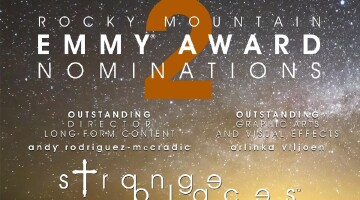

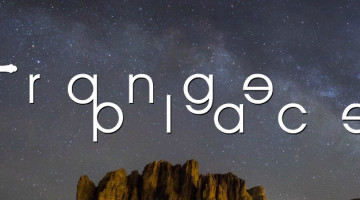

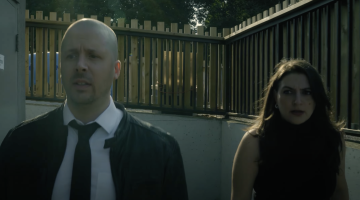
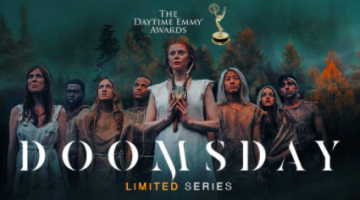

No Comment